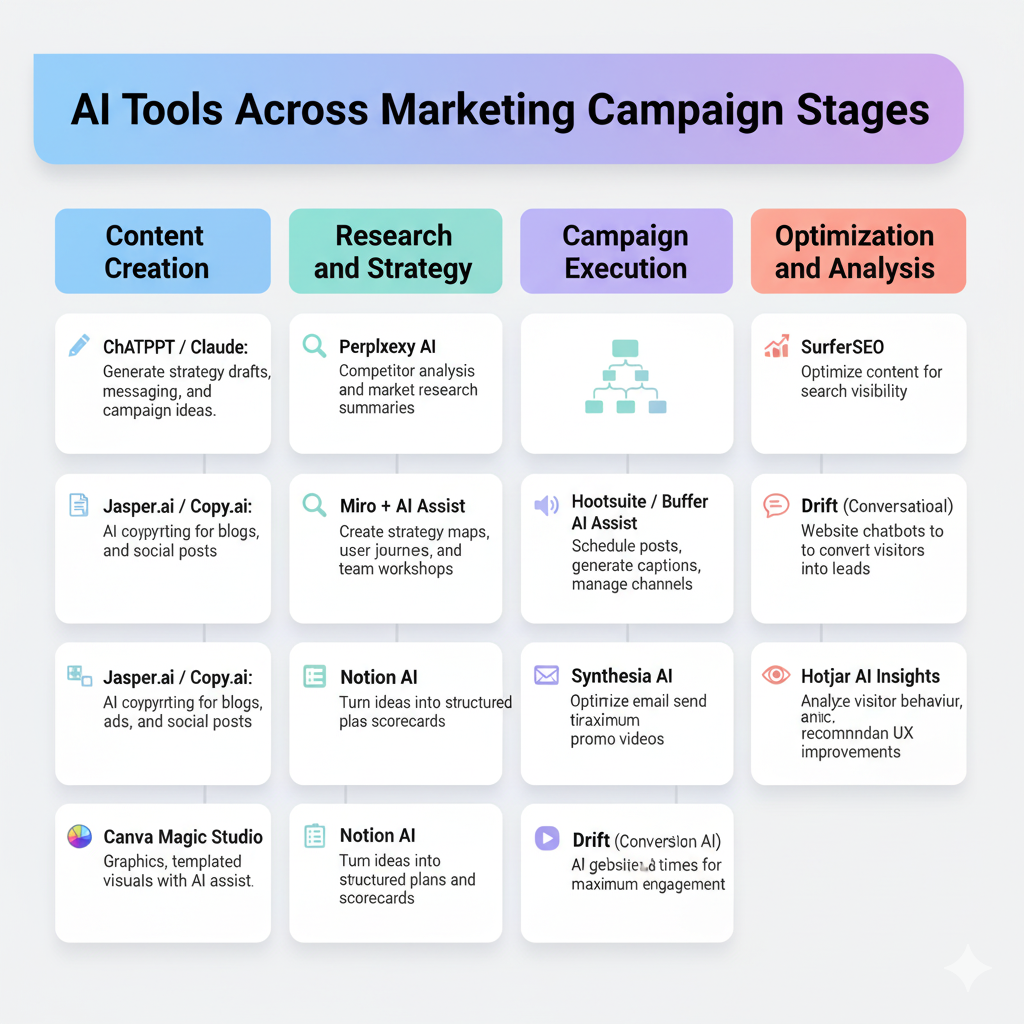In today’s fast-moving business landscape, having a clear, well-structured digital marketing strategy is more important than ever, especially for small businesses. With limited budgets, a proliferation of digital channels, shifting consumer behavior and rising competition, it’s easy for efforts to become fragmented, unfocused or ineffective. Many small business owners struggle with questions like: Which channel do I prioritize? How do I set realistic goals? How will I track what’s working? According to industry research, small firms often lack resources, digital skills and measurable tracking to make the most of online marketing.
In this blog post I’ll Walk you through 8 simple, actionable steps to build a digital marketing strategy from the ground up. Each step is practical, uses accessible tools and is designed with a small business mindset in mind.
Step 1: Audit your current digital presence & performance
What the step entails
Begin by taking stock of where you currently stand what digital channels you use (website, social media, email, paid advertising), what your performance has been (traffic, engagement, conversions) and how your brand is currently perceived online.
Why this step matters
Without a clear baseline you won’t know what to improve, what to stop or what to build from. An audit helps you understand what’s working, what isn’t, and where the gaps are. Especially for smaller teams, you want to avoid doing “everything” at once.
How you can practically implement it
- List all your digital touchpoints: website, blog, Facebook/Instagram pages, LinkedIn, email list, paid ads.
- For each channel, ask: How many visitors or followers do I have? What is the engagement like? Are any leads or sales coming from this channel?
- Use free tools: e.g., Google Analytics (to check website traffic), Google Search Console (for search visibility), built-in analytics on social platforms.
- Identify gaps: e.g., no tracking set up, one social channel but no content plan, website not mobile-friendly etc.
- Example: A local café might discover in the audit that although they have 2,000 Instagram followers, posts rarely get comments, and their website sees few bookings. So, they may decide to focus first on content engagement before expanding.
Step 2: Define your business goals and digital objectives
What the step entails
You need to tie your digital marketing efforts directly to your overall business goals and then articulate specific digital objectives that ladder up to them. Earning a certificate in business development can also help you align these strategies more effectively and drive measurable growth.
Why this step matters
When you don’t set clear goals, you risk “marketing for marketing’s sake” posting, advertising or engaging without knowing whether you are driving business results. Clear goals give focus, measurable targets, and guard against wasted effort (a common small-business pitfall)
How you can practically implement it
- Start by listing 1-3 high-level business goals. Eg: “Increase revenue by 20 % in the next 12 months”, “Increase repeat purchases from existing customers by 30 %”, “Open a second store location”.
- For each business goal, define one or more digital objectives. Eg: “Drive 1,000 new website visitors per month from search by Q3”, “Grow email list from 500 to 1,500 subscribers in 6 months”, “Get 200 Instagram followers/week and increase engagement from 1% to 3%”.
- Make sure objectives follow the SMART paradigm: Specific, Measurable, Achievable, Relevant, Time-bound.
- Example: A small e-commerce business might set a digital objective: “Achieve 150 conversions/month from Google Ads by end of Q2 with CAC ≤ ₹1,500”.
Step 3: Understand your audience
What the step entails
Get clear on who your customers are (or should be): their demographics, behaviors, pain points, motivations, where they hang out online, how they make purchasing decisions.
Why this step matters
If you don’t know your audience well, you’ll waste resources speaking to the wrong people, choosing the wrong channels or crafting irrelevant messages. Small businesses have to be very targeted you cannot be everywhere to everyone.
How you can practically implement it
- Create a simplified “buyer persona” or two: e.g., “Priya, age 28-35, urban, buys handmade jewelry online, uses Instagram and WhatsApp, values eco-friendly packaging”; “Ravi, age 40-55, owns a small manufacturing unit, uses Google search to find tooling suppliers, reads LinkedIn articles”.
- Ask questions: What problem are they trying to solve? What stops them from buying? Where do they search for solutions? What influences their decision-making?
- Use tools and data: Google Analytics demographics, survey your existing customers, social-media insights (age, gender, location), competitor’s audience (see Step 4).
- Example: A local tutoring business may realize their audience is parents of children aged 8-15, in suburb X, who use WhatsApp and are willing to try online sessions so they focus messaging on “remote revision classes for grade 9/10 students” and use WhatsApp groups + Instagram stories.
Step 4: Research your competitors & the market
What the step entails
Look beyond yourself and your audience research what your competitors are doing online (channels, messaging, content) and get a feel for the broader digital market conditions: search demand, channel saturation, potential opportunity gaps.
Why this step matters
Even the best internal strategy can falter if the market/environment is ignored. By researching competitors & the market you can identify what works, where there are opportunities (or overcrowded channels), and how you might differentiate. For small businesses, this gives you an edge.
How you can practically implement it
- Identify 3-5 direct competitors (local & online) and review their digital presence: their website, content/blogs, social-media channels, reviews, ads. What are they saying? How often do they post? What offers/promotions do they offer?
- Use tools (free or freemium) like Similar WEB, SEMrush (trial) to check traffic, keywords, search rankings, backlink profile.
- Map your “channel matrix”: which channels are saturated? Which are under-utilised? Eg: If everyone is on Facebook and Instagram, but nobody is using LinkedIn for your niche, maybe there’s an opening there.
- Example: A local café might discover that several nearby cafés are highly active on Instagram but none run a weekly newsletter so the café might launch a “Tuesday Specials” newsletter to tap a less-crowded channel.
Step 5: Choose the right digital channels and tactics

What the step entails
Based on your audit, goals and audience, choose which digital channels (e.g., website/SEO, email, social media, paid search/ads, content marketing) you’ll focus on and which tactics within them.
Why this step matters
Trying to be on every platform is a common mistake, especially for small businesses with limited time and budget. You want to pick the channels that are most likely to deliver return and match your audience behaviors.
How you can practically implement it
- List possible channels: Website/SEO, Google Ads (search/display), Facebook/Instagram Ads, LinkedIn (B2B), Email marketing, Content/blog, Influencer or affiliate marketing, Local listings/Google Business Profile etc.
- Prioritize by: audience presence (where are your people), cost/complexity (can you manage it?); expected ROI (based on similar efforts).
- Define tactics: e.g., for SEO optimize your website for long-tail keywords relevant to your local region; for email send fortnightly “how-to” newsletters; for social media run “behind-the-scenes” Instagram reels, or user-generated content contest.
- Categorize immediate vs longer-term: Some tactics yield quicker results (paid search), others take time (SEO, content). Balance short-term wins with long-term growth.
- Example: A small eco-friendly clothing brand might choose: Website + SEO (focus long-term), Instagram + TikTok (audience active there), Email marketing (nurture repeat buyers), and Google Ads (for immediate traffic). They do not try Pinterest or LinkedIn which are less relevant for their audience.
Step 6: Build the content, messaging & brand experience
What the step entails
Now turn your strategy into something tangible: craft your brand voice, core messages, value proposition, and build content and experiences across your chosen channels that reflect them e.g., blog posts, social posts, email copy, website landing pages, ad creatives.
Why this step matters
Channels and tactics are important, but if your messaging is inconsistent, irrelevant or weak, your efforts will not resonate. The brand experience you create is what connects with your audience and drives trust, engagement and conversion. A strong content messaging strategy enables all other steps to function effectively. If you want to strengthen these skills, consider enrolling in digital marketing classes in Ahmedabad to learn how to craft impactful and consistent brand messaging.
How you can practically implement it
- Define your value proposition and brand voice: what you stand for, how you are different, why the customer should care.
- For each audience persona, map key messages: pain points → solution you provide → why you are credible → call to action.
- Create a content calendar: what you will publish, when, on which channel, in what format. For example: blog post every 2 weeks, Instagram stories three times/week, email newsletter monthly, paid and creative refreshed monthly.
- Use accessible tools: e.g., Canva for visuals, free blog templates, Google Sheets for content calendar.
- Ensure brand experience is consistent: Website design, tone-of-voice, follow-up email experience, landing page experience, social constructs, and website development all play crucial roles in shaping a cohesive and effective digital presence.
- Example: A local flower shop builds messaging around “fresh local bouquets delivered within 2 hours”, uses Instagram reels of bouquet-making, sends email “Behind the bouquet” showing florist story, and has a landing page optimized for mobile with easy checkout.
Step 7: Plan your budget, resources & schedule
What the step entails
Map out how much you will invest (time, money, manpower), allocate responsibilities (who does what), set a timeline/schedule for your campaigns/tactics, and ensure you have the necessary tools and processes.
Why this step matters
Without planning your budget and resources, even the best-laid strategy can fail because you run out of steam, overspend, or have no accountability. Especially small businesses must maximize impact per rupee/hour spent. It also ensures you remain consistent, which is key to digital strategy success.
How you can practically implement it
- Set your digital-marketing budget: e.g., identify monthly spending for paid ads, software/tools, freelancer/agency costs.
- Define human resources: Who will create content? Who will run ads? Who will monitor performance? If it’s yourself, estimate hours/week.
- Make a schedule or roadmap: e.g., Q1: establish website/SEO baseline; April: launch Instagram campaign; May: start email automation; July: review results.
- Identify tools/platforms: e.g., email automation tool (Mailchimp/Sendinblue), social-media scheduling tool, analytics dashboard, ad-platform account.
- Include contingency: allow for testing new channels/tactics.
- Example: A small digital product business assigns one intern (15 hrs./week) to blog content, the owner to social posts (5 hrs./week), budget ₹30,000/month for Google Ads for first 3 months, schedule a full review after 90 days.
Step 8: Measure, optimize & iteratively improve
What the step entails
Set up the measurement framework, regularly review performance, learn from what’s working (and what’s not), optimize your tactics, iterate your strategy and scale what works. It’s a continuous cycle.
Why this step matters
Digital marketing is not “set and forget”. The landscape changes, audience behavior shifts, channels evolve, budgets fluctuate. A strategy that’s not reviewed becomes outdated. Moreover, small businesses that don’t measure cannot know whether they are wasting effort or how to improve.
How you can practically implement it

- Define key metrics for your digital objectives. Examples: website traffic, conversion rate, cost per acquisition (CPA), email open rate, social engagement rate.
- Set up tracking: UTM codes for campaigns, Google Analytics goals, conversion tracking in ad platforms, dashboards.
- Establish review cadence: weekly quick check (are ads running, any red flags?), monthly in-depth review vs goals, quarterly full strategy review.
- Optimize: For example, if a particular ad audience isn’t converting, pause and test a different target; if email open rates are low, test a new subject line; if Instagram engagement is low, test different content format.
- Iterate your strategy: Based on results, you might drop less-effective channels, increase investment in performant ones, refine messaging, adjust budget.
- Example: A yoga-studio business running Facebook Ads sees high click-through but low sign-up conversion. On review they realize their landing page lacks clear call-to-action, so they redesign it, test again, and reduce cost per signup by 40% over the next month.
Conclusion
Building a digital marketing strategy doesn’t have to be complicated. By following these eight steps and adapting them to your business’ size, pace and resources you’ll create a roadmap that gives direction, focus and measurable outcomes. Remember: your strategy is not a one-time activity. It’s a living document. As consumer behavior changes, new channels emerge, your business evolves so must your strategy.
Start this week by picking one step to focus on (for instance, audit your current presence). Set a 90-day review, commit to at least one key metric and schedule a monthly check-in. Over time you’ll build momentum, measure what works, and refine what doesn’t.


